#MIT computer science and technology
Explore tagged Tumblr posts
Text

COMPUTER-SOFTWARE ENGINEERING RISING IN THE AMERICAN SPACE PROGRAM.
PIC INFO: Spotlight on American computer programmer Margaret Hamilton (b. 1936), at the MIT Instrumentation Laboratory, during her time as lead flight software engineer for the Apollo space mission, c. 1969.
MINI-BIO: "She and her team wrote the code for the inflight software of the spacecraft, and her work contributed to the safe landing of Apollo 11 on the moon in 1969."
Sources: www.thenation.com/article/archive/peoples-history-of-personal-computing-joy-lisi-rankin-review-silicon-valley-bros & X.
#Margaret Hamilton NASA#Apollo#Margaret Hamilton Software Engineer#Software Engineer#Apollo Mission#Apollo Space Mission#Apollo Program#USA#Apollo 11#1960s#60s#Sixties#Massachusetts Institute of Technology#Computer Scientist#Computer Science#MIT Instrumentation Laboratory#MIT#American Style#United States#1969#Space Program#Margaret Hamilton#NASA#National Aeronautics and Space Administration
4 notes
·
View notes
Text
Making computation come alive
🧬 ..::Science & Tech::.. 🧬 A new course teaches students how to use computational techniques to solve real-world problems, from landing a spacecraft to placing cell phone towers
#MIT#Education#Teaching#Students#Undergraduate#ComputerModeling#Mathematics#Aeronautical#Technology#Computing#EngineeringSchool#Science
1 note
·
View note
Text
Alex Shalek named director of the Institute for Medical Engineering and Science
New Post has been published on https://thedigitalinsider.com/alex-shalek-named-director-of-the-institute-for-medical-engineering-and-science/
Alex Shalek named director of the Institute for Medical Engineering and Science


Alex K. Shalek, the J. W. Kieckhefer Professor in the MIT Institute for Medical Engineering and Sciences (IMES) and Department of Chemistry, has been named the new director of IMES, effective Aug. 1.
“Professor Shalek’s substantial contributions to the scientific community as a researcher and educator have been exemplary. His extensive network across MIT, Harvard, and Mass General Brigham will be a tremendous asset as director of IMES,” says Anantha Chandrakasan, chief innovation and strategy officer, dean of the School of Engineering, and the Vannevar Bush Professor of Electrical Engineering and Computer Science. “He will undoubtedly be an excellent leader, bringing his innovative approach and collaborative spirit to this new role.”
Shalek is a core member of IMES, a professor of chemistry, and holds several leadership positions, including director of the Health Innovation Hub. He is also an extramural member of MIT’s Koch Institute for Integrative Cancer Research; a member of the Ragon Institute of Mass General, MIT, and Harvard; an institute member of the Broad Institute of MIT and Harvard; an assistant in immunology at Mass General Brigham; and an instructor in health sciences and technology at Harvard Medical School.
The Shalek Lab’s research seeks to uncover how communities of cells work together within human tissues to support health, and how they become dysregulated in disease. By developing and applying innovative experimental and computational technologies, they are shedding light on a wide range of human health conditions.
Shalek and his team use a cross-disciplinary approach that combines genomics, chemical biology, and nanotechnology to develop platforms to profile and control cells and their interactions. Collaborating with researchers across the globe, they apply these tools to study human diseases in great detail. Their goal is to connect what occurs at a cellular level with what medical professionals observe in patients, paving the way for more precise ways to prevent and treat diseases.
Over the course of his career, Shalek’s groundbreaking research has earned him widespread recognition and numerous awards and honors. These include an NIH New Innovator Award, a Beckman Young Investigator Award, a Searle Scholar Award, a Pew-Stewart Scholar Award, an Alfred P. Sloan Research Fellowship in Chemistry, and an Avant-Garde (DP1 Pioneer) Award. Shalek has also been celebrated for his dedication as a faculty member, educator, and mentor. He was awarded the 2019-20 Harold E. Edgerton Faculty Achievement Award at MIT and the 2020 HMS Young Mentor Award.
Shalek received his bachelor’s degree in chemical physics from Columbia University and his master’s and PhD in chemical physics from Harvard University. Prior to joining MIT’s faculty in 2014, he was a postdoc at the Broad Institute.
Shalek succeeds Elazer Edelman, the Edward J. Poitras Professor in Medical Engineering and Science, who has led IMES since April 2018.
“I am grateful to Professor Edelman for his incredible leadership and service to IMES over the past six years,” says Chandrakasan. “His contributions to IMES have been invaluable, and we are thankful for his dedication and vision during his tenure as director.”
#approach#Biology#Broad Institute#Cancer#career#Cells#chemical#chemistry#collaborative#Community#computer#Computer Science#course#Disease#Diseases#Edgerton#engineering#experimental#Faculty#genomics#harvard#Harvard-MIT Health Sciences and Technology#Health#Health sciences and technology#how#human#Human health#immunology#Innovation#Institute for Medical Engineering and Science (IMES)
0 notes
Text
This Tiny, Tamper-Proof ID Tag Can Authenticate Almost Anything
Massachusetts Institute of Technology (MIT) Engineers Developed a Tag That Can Reveal with Near-Perfect Accuracy Whether an Item is Real or Fake. The Key is in the Glue on the Back of the Tag.
— Adam Zewe | MIT News | Publication Date: February 18, 2024

A Few Years Ago, MIT Researchers Invented a Cryptographic ID Tag that is several times smaller and significantly cheaper than the traditional radio frequency tags (RFIDs) that are often affixed to products to verify their authenticity.
This tiny tag, which offers improved security over RFIDs, utilizes terahertz waves, which are smaller and travel much faster than radio waves. But this terahertz tag shared a major security vulnerability with traditional RFIDs: A counterfeiter could peel the tag off a genuine item and reattach it to a fake, and the authentication system would be none the wiser.
The researchers have now surmounted this security vulnerability by leveraging terahertz waves to develop an antitampering ID tag that still offers the benefits of being tiny, cheap, and secure.
They mix microscopic metal particles into the glue that sticks the tag to an object, and then use terahertz waves to detect the unique pattern those particles form on the item’s surface. Akin to a fingerprint, this random glue pattern is used to authenticate the item, explains Eunseok Lee, an electrical engineering and computer science (EECS) graduate student and lead author of a paper on the antitampering tag.
“These metal particles are essentially like mirrors for terahertz waves. If I spread a bunch of mirror pieces onto a surface and then shine light on that, depending on the orientation, size, and location of those mirrors, I would get a different reflected pattern. But if you peel the chip off and reattach it, you destroy that pattern,” adds Ruonan Han, an associate professor in EECS, who leads the Terahertz Integrated Electronics Group in the Research Laboratory of Electronics.
The researchers produced a light-powered antitampering tag that is about 4 square millimeters in size. They also demonstrated a machine-learning model that helps detect tampering by identifying similar glue pattern fingerprints with more than 99 percent accuracy.
Because the terahertz tag is so cheap to produce, it could be implemented throughout a massive supply chain. And its tiny size enables the tag to attach to items too small for traditional RFIDs, such as certain medical devices.
The paper, which will be presented at the IEEE Solid State Circuits Conference, is a collaboration between Han’s group and the Energy-Efficient Circuits and Systems Group of Anantha P. Chandrakasan, MIT’s chief innovation and strategy officer, dean of the MIT School of Engineering, and the Vannevar Bush Professor of EECS. Co-authors include EECS graduate students Xibi Chen, Maitryi Ashok, and Jaeyeon Won.
Preventing Tampering
This research project was partly inspired by Han’s favorite car wash. The business stuck an RFID tag onto his windshield to authenticate his car wash membership. For added security, the tag was made from fragile paper so it would be destroyed if a less-than-honest customer tried to peel it off and stick it on a different windshield.
But that is not a terribly reliable way to prevent tampering. For instance, someone could use a solution to dissolve the glue and safely remove the fragile tag.
Rather than authenticating the tag, a better security solution is to authenticate the item itself, Han says. To achieve this, the researchers targeted the glue at the interface between the tag and the item’s surface.
Their antitampering tag contains a series of miniscule slots that enable terahertz waves to pass through the tag and strike microscopic metal particles that have been mixed into the glue.
Terahertz waves are small enough to detect the particles, whereas larger radio waves would not have enough sensitivity to see them. Also, using terahertz waves with a 1-millimeter wavelength allowed the researchers to make a chip that does not need a larger, off-chip antenna.
After passing through the tag and striking the object’s surface, terahertz waves are reflected, or backscattered, to a receiver for authentication. How those waves are backscattered depends on the distribution of metal particles that reflect them.
The researchers put multiple slots onto the chip so waves can strike different points on the object’s surface, capturing more information on the random distribution of particles.
“These responses are impossible to duplicate, as long as the glue interface is destroyed by a counterfeiter,” Han says.
A vendor would take an initial reading of the antitampering tag once it was stuck onto an item, and then store those data in the cloud, using them later for verification.
AI For Authentication
But when it came time to test the antitampering tag, Lee ran into a problem: It was very difficult and time-consuming to take precise enough measurements to determine whether two glue patterns are a match.
He reached out to a friend in the MIT Computer Science and Artificial Intelligence Laboratory (CSAIL) and together they tackled the problem using AI. They trained a machine-learning model that could compare glue patterns and calculate their similarity with more than 99 percent accuracy.
“One drawback is that we had a limited data sample for this demonstration, but we could improve the neural network in the future if a large number of these tags were deployed in a supply chain, giving us a lot more data samples,” Lee says.
The authentication system is also limited by the fact that terahertz waves suffer from high levels of loss during transmission, so the sensor can only be about 4 centimeters from the tag to get an accurate reading. This distance wouldn’t be an issue for an application like barcode scanning, but it would be too short for some potential uses, such as in an automated highway toll booth. Also, the angle between the sensor and tag needs to be less than 10 degrees or the terahertz signal will degrade too much.
They plan to address these limitations in future work, and hope to inspire other researchers to be more optimistic about what can be accomplished with terahertz waves, despite the many technical challenges, says Han.
“One thing we really want to show here is that the application of the terahertz spectrum can go well beyond broadband wireless. In this case, you can use terahertz for ID, security, and authentication. There are a lot of possibilities out there,” he adds.
This work is supported, in part, by the U.S. National Science Foundation and the Korea Foundation for Advanced Studies.
#Research 🔬 | Computer 🖥️ Chips | Internet 🛜 of Things | Electronics | Sensors | Computer 🖥️ Science & Technology#Artificial intelligence | Machine Learning | Supply Chains | Research 🔬 Laboratory of Electronics#Electrical Engineering & Computer Science (EECS) | School of Engineering | MIT Schwarzman College of Computing#| National Science Foundation (NSF)
0 notes
Text

0 notes
Note
perhaps peter has an important interview for something like a college interview or something and perhaps reader had something to do before it so couldn’t go with him (for moral support) but then she rushes through her thing to get to him and surprises him like 5 min prior, gives him a good luck kiss when his name gets called and tells him to call her after. they celebrate that night (since it went well) with pizza, a movie and cuddles.
Interview - Tom!Peter Parker x Fem!Stark!Reader
Pairing: Tom!Peter Parker x Fem!Stark!Reader
Warnings: None! Super fluffy <3
Word Count: 1,001
Note: Reader isn't Stark's daughter she's Stark's niece
A/N: I hope you like this @urmykindofwoman !!

Peter and I were in our senior year, which came with all the busy days and rough nights of writing college application essays, getting final assessments to the teachers, and booking interviews. While Peter and I were dating, we definitely weren’t going down the same career path. I had my own after-school radio show, wanting to go into something arts and humanities-based, and Peter clearly wanted to do biology and biochemistry. He wanted to go to MIT; science and technology were his whole life—especially with his ‘internship’ with Tony, who had helped him get an interview.
“Y/N? Where’s my suit?” Peter asked, running around his bedroom frantically.
“It’s over there, Pete. Relax, and you’ll do fine. I’m sure Tony put in a good word for you anyway,” I smiled.
“And you’re sure you can’t come with me? I just—this interview is a big deal for me, and if I don’t get in, then I have no idea what I’m going to do,” he said as he folded the suit and put it into his backpack.
“You know I can’t. I’ve got the radio show in an hour, and I can’t miss that,” I sighed, getting up and grabbing my bag. Peter nodded, reluctantly accepting the situation. “But make sure to call me once it’s over and let me know how it goes, okay?” I pulled him in for a quick kiss.
“I love you,” he grinned.
“Ditto, spider boy.”
I walked to the radio station to meet Ned, who had been co-hosting with me for the last few years. We didn’t have any guests for this episode, and instead, we were talking about the latest Star Wars movie that had come out. The episode lasted for an hour and a half, and I sat there staring at the clock to see if I could leave and make it to support Peter before his interview.
“And that’s our show!” Ned smiled and played the last piece of music, finally turning off our mics. “Okay, you better hurry if you’re going to be on time to surprise Peter.” I nodded, grabbing my bag and rushing out of the studio. I ran down the street towards Peter’s house, where he was doing the interview online. Knocking on the door, I noticed it was only 10 minutes before the interview started.
“Y/N?! Oh my god, what are you doing here? What about the show and Ned and—”
“I ran here when we finished. You said you wanted me for support, so I’m here, Spidey,” I grinned. Peter returned the smile, picked me up, and spun us around.
“Okay, Pete, you need to get yourself ready. They’re going to call you any second now, and you’re gonna ace it!” I pressed my lips to his in a lighthearted kiss, my hand coming up to curl his hair in my fingers. He pulled away once his computer started ringing and closed the door to his bedroom.
I sat there scrolling through my phone, hearing the hum of Peter’s voice through the door when he responded to the questions. MJ had sent me a few text messages about our English report, so I took the time to respond. About an hour later, Peter finally opened the door and walked out. I stood up excitedly, walking over to him.
“How’d it go?” His face showed no emotion, and my mind raced through all the possibilities. I’d put him off his game by surprising him, hadn’t I? Peter was going to hate me, and Tony was going to be so disappointed in Peter. It was all my fault.
“They said it was a pleasure to meet me,” a small smile grew on his face, and he looked shell-shocked, completely unsure of how to act.
“Oh my god, Peter, yes!” I screamed, running into his arms. “We need to celebrate! I’ll call Tony and organize something. We are 100% having a pizza party with the others.”
“You’re too good for me, Y/N.” Peter pressed a kiss to my cheek as I pulled out my phone to call my uncle.
“Hi, Tony. Yes, Peter did well in his interview. I’m wondering if we can order pizza and invite the others for a movie to celebrate?” Peter placed kisses across my jaw and down my neck, smiling with each press of his lips.
“Okay, I’ll call them and make sure they’ll be there,” Tony responded.
“Tell him I say hi,” Peter mumbled.
“Peter says—”
“I can hear him, Y/N. Tell him to watch where he puts those hands. Be here by 6, okay?” Tony laughed before hanging up. Peter pulled away and looked up at me with a questioning expression.
“Stark Tower at 6.”
“God, I love you,” he grinned.
“I know you do,” I said, getting everything I needed for dinner.
“That was 100% a Star Wars reference, wasn’t it?” Peter pointed to his Empire Strikes Back poster, and I nodded, trying to suppress my laughter. Peter shot out a web to pull me close to him again.
“You’re a nerd, you know that, Parker?”
“As if you’re any worse; you’ve got that Stark blood in you. I can smell it with my spider-sense—”
“Your Peter tingle,” I interrupted. He let out a loud and annoyed sigh.
“And you’ve ruined the moment.”
“You ruined it yourself, spider boy.”
//
Please submit any requests y'all have! I love to write so let me know if you've got any!
#masterlist#peter parker#writing#tom holland#andrew garfield#marvel#fanfic#peter parker fic#peter parker fluff#peter parker imagines#peter parker angst#peter parker x reader#peter parker fanfiction#peter parker writing#avengers x reader#the avengers#avengers#tom holland!peter parker x reader#mcu!spiderman x reader#mcu!peter parker#mcu!peter parker x reader#tom holland x reader#tom holland fluff#tom holland imagine#tom holland fanfiction#tom holland angst#andrew garfield peter parker#tasm!peter parker x reader#andrew peter parker x reader#tasm spiderman
134 notes
·
View notes
Text
Chapter One of “Picks and Shovels” (Part 1)
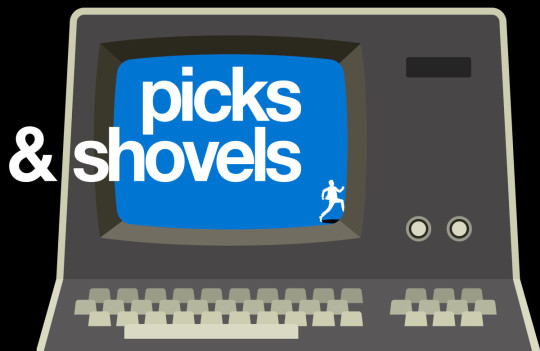
Picks and Shovels is a new, standalone technothriller starring Marty Hench, my two-fisted, hard-fighting, tech-scam-busting forensic accountant. You can pre-order it on my latest Kickstarter, which features a brilliant audiobook read by Wil Wheaton.

My next novel is Picks and Shovels, out next month. It's tells the origin story of Martin Hench, my hard-charging, scambusting, high-tech forensic accountant, in a 1980s battle over the soul of a PC company:
https://us.macmillan.com/books/9781250865908/picksandshovels
I'm currently running a Kickstarter to pre-sell the book in every format: hardcover, DRM-free ebook, and an independently produced, fabulous DRM-free audiobook read by Wil Wheaton, who just nailed the delivery:
https://www.kickstarter.com/projects/doctorow/picks-and-shovels-marty-hench-at-the-dawn-of-enshittification
Picks and Shovels opens with a long prologue that recounts Marty's misadventures as a failing computer science student at MIT, his love-affair with computers, and his first disastrous startup venture. It ends with him decamping to Silicon Valley with his roommate Art, a brilliant programmer, to seek their fortune.
Chapter one opens with Marty's first job, working for a weird PC company (there were so many weird PC companies back then!). I've posted Wil's audio reading of chapter one as a teaser for the Kickstarter:
https://www.youtube.com/watch?v=IGXz1mkAd2Q
(Here it is as an MP3 at the Internet Archive:)
https://ia600607.us.archive.org/5/items/picks-and-shovels-promo/audio.mp3
The audio is great, but I thought I'd also serialize the text of Chapter One here, in five or six chunks. If you enjoy this and want to pre-order the book, please consider backing the Kickstarter:
https://www.kickstarter.com/projects/doctorow/picks-and-shovels-marty-hench-at-the-dawn-of-enshittification
Chapter One
Fidelity Computing was the most colorful PC company in Silicon Valley.
A Catholic priest, a Mormon bishop, and an Orthodox rabbi walk into a technology gold rush and start a computer company. The fact that it sounded like the setup for a nerdy joke about the mid-1980s was fantastic for their bottom line. Everyone who heard their story loved it.
As juicy as the story of Fidelity Computing was, they flew under most people’s radar for years, even as they built a wildly profitable technology empire through direct sales through faith groups. The first time most of us heard of them was in 1983, when Byte ran its cover story on Fidelity Computing, unearthing a parallel universe of technology that had grown up while no one was looking.
At first, I thought maybe they were doing something similar to Apple’s new Macintosh: like Apple, they made PCs (the Wise PC), an operating system (Wise DOS), and a whole line of monitors, disk drives, printers, and software.
Like the Mac, none of these things worked with anything else—you needed to buy everything from floppy disks to printer cables specially from them, because nothing anyone else made would work with their system.
And like the Mac, they sold mostly through word of mouth. The big difference was that Mac users were proud to call themselves a cult, while Fidelity Computing’s customers were literally a religion.
Long after Fidelity had been called to the Great Beyond, its most loyal customers gave it an afterlife, nursing their computers along, until the parts and supplies ran out. They’d have kept going even then, if there’d been any way to unlock their machines and use the same stuff the rest of the computing world relied on. But that wasn’t something Fidelity Computing would permit, even from beyond the grave.
I was summoned to Fidelity headquarters—in unfashionable Colma, far from the white-hot start-ups of Palo Alto, Mountain View, and, of course, Cupertino—by a friend of Art’s. Art had a lot more friends than me. I was a skipping stone, working as the part-time bookkeeper/accountant/CFO for half a dozen companies and never spending more than one or two days in the same office.
Art was hardly more stable than me—he switched start-ups all the time, working for as little as two months (and never for more than a year) before moving on. His bosses knew what they were getting: you hired Art Hellman to blaze into your company, take stock of your product plan, root out and correct all of its weak points, build core code libraries, and then move on. He was good enough and sufficiently in demand to command the right to behave this way, and he wouldn’t have it any other way. My view was, it was an extended celebration of his liberation from the legal villainy of Nick Cassidy III: having narrowly escaped a cage, he was determined never to be locked up again.
Art’s “engagements”—as he called them—earned him the respect and camaraderie of half the programmers and hardware engineers in the Valley. This, in spite of the fact that he was a public and ardent member of the Lavender Panthers, wore the badge on his lapel, went to the marches, and brought his boyfriend to all the places where his straight colleagues brought their girlfriends.
He’d come out to me less than a week after I arrived by the simple expedient of introducing the guy he was watching TV with in our living room as Lewis, his boyfriend. Lewis was a Chinese guy about our age, and his wardrobe—plain white tee, tight blue jeans, loafers—matched the new look Art had adopted since leaving Boston. Lewis had a neat, short haircut that matched Art’s new haircut, too.
To call the Art I’d known in Cambridge a slob would be an insult to the natty, fashion-conscious modern slob. He’d favored old band T-shirts with fraying armpit seams, too-big jeans that were either always sliding off his skinny hips or pulled up halfway to his nipples. In the summer, his sneakers had holes in the toes. In the winter, his boots were road-salt-crusted crystalline eruptions. His red curls were too chaotic for a white-boy ’fro and were more of a heap, and he often went days without shaving.
There were members of the Newbury Street Irregulars who were bigger slobs than Art, but they smelled. Art washed, but otherwise, he looked like a homeless person (or a hacker). His transformation to a neatly dressed, clean-shaven fellow with a twenty-five-dollar haircut that he actually used some sort of hairspray on was remarkable. I’d assumed it was about his new life as a grown-up living far from home and doing a real job. It turned out that wasn’t the reason at all.
“Oh,” I said. “That makes a lot of sense.” I shook Lewis’s hand. He laughed. I checked Art. He was playing it cool, but I could tell he was nervous. I remembered Lucille and how she listened, and what it felt like to be heard. I thought about Art, and the things he’d never been able to tell me.
There’d been a woman in the Irregulars who there were rumors about, and there were a pair of guys one floor down in Art’s building who held hands in the elevator, but as far as I knew up until that moment, I hadn’t really ever been introduced to a homosexual person. I didn’t know how I felt about it, but I did know how I wanted to feel about it.
So Art didn’t just get to know all kinds of geeks from his whistle-stop tour of Silicon Valley’s hottest new tech ventures. He was also plugged into this other network of people from the Lavender Panthers, and their boyfriends and girlfriends, and the people he knew from bars and clubs. He and Lewis lasted for a couple of months, and then there were a string of weekends where there was a new guy at the breakfast table, and then he settled down again for a while with Artemis, and then he hit a long dry spell.
I commiserated. I’d been having a dry spell for nearly the whole two years I’d been in California. The closest I came to romance was exchanging a letter with Lucille every couple of weeks—she was a fine pen pal, but that wasn’t really a substitute for a living, breathing woman in my life.
Art threw himself into his volunteer work, and he was only half joking when he said he did it to meet a better class of boys than you got at a club. Sometimes, there’d be a committee meeting in our living room and I’d hear about the congressional committee hearing on the “gay plague” and the new wave of especially vicious attacks. It was pretty much the only time I heard about that stuff—no one I worked with ever brought it up, unless it was to make a terrible joke.
It was Murf, one of the guys from those meetings, who told me that Fidelity Computing was looking for an accountant for a special project. He had stayed after the meeting and he and Art made a pot of coffee and sat down in front of Art’s Apple clone, a Franklin Ace 1200 that he’d scored six months ahead of its official release. After opening the lid to show Murf the interior, Art fired it up and put it through its paces.
I hovered over his shoulder, watching. I’d had a couple of chances to play with the 1200, and I wanted one more than anything in the world except for a girlfriend.
“Marty,” Art said, “Murf was telling me about a job I thought you might be good for.”
The Ace 1200 would have a list price of $2,200. I pulled up a chair.
Fidelity Computing’s business offices were attached to their warehouse, right next to their factory. It took up half of a business park in Colma, and I had to circle it twice to find a parking spot. I was five minutes late and flustered when I presented myself to the receptionist, a blond woman with a ten – years – out – of – date haircut and a modest cardigan over a sensible white shirt buttoned to the collar, ring on her finger.
“Hello,” I said. “I’m Marty Hench. I—uh—I’ve got a meeting with the Reverend Sirs.” That was what the executive assistant I’d spoken to on the phone had called them. It sounded weird when he said it. It sounded weirder when I said it.
The receptionist gave me a smile that only went as far as her lips. “Please have a seat,” she said. There were only three chairs in the little reception area, vinyl office chairs with worn wooden armrests. There weren’t any magazines, just glossy catalogs featuring the latest Fidelity Computing systems, accessories, consumables, and software. I browsed one, marveling at the parallel universe of computers in the strange, mauve color that denoted all Fidelity equipment, including the boxes, packaging, and, now that I was attuned to it, the accents and carpet in the small lobby. A side door opened and a young, efficient man in a kippah and wire-rim glasses called for me: “Mr. Hench?” I closed the catalog and returned it to the pile and stood. As I went to shake his hand, I realized that something had been nagging me about the catalog—there were no prices.
“I’m Shlomo,” the man said. “We spoke on the phone. Thank you for coming down. The Reverend Sirs are ready to see you now.”
He wore plain black slacks, hard black shiny shoes, and a white shirt with prayer-shawl tassels poking out of its tails. I followed him through a vast room filled with chest-high Steelcase cubicles finished in yellowing, chipped wood veneer, every scratch pitilessly lit by harsh overhead fluorescents. Most of the workers at the cubicles were women with headsets, speaking in hushed tones. The tops of their heads marked the interfaith delineators: a block of Orthodox headscarves, then a block of nuns’ black and white scarves (I learned to call them “veils” later), then the Mormons’ carefully coiffed, mostly blond dos.
“This way,” Shlomo said, passing through another door and into executive row. The mauve carpets were newer, the nap all swept in one direction. The walls were lined with framed certificates of appreciation, letters from religious and public officials (apparently, the church and state were not separate within the walls of Fidelity Computing), photos of groups of progressively larger groups of people ranked before progressively larger offices—the company history.
We walked all the way to the end of the hall, past closed doors with nameplates, to a corner conference room with a glass wall down one side, showing a partial view of a truck-loading dock behind half-closed vertical blinds. Seated at intervals around a large conference table were the Reverend Sirs themselves, each with his own yellow pad, pencil, and coffee cup.
Shlomo announced me: “Reverend Sirs, this is Marty Hench. Mr. Hench, these are Rabbi Yisrael Finkel, Bishop Leonard Clarke, and Father Marek Tarnowski.” He backed out of the door, leaving me standing, unsure if I should circle the table shaking hands, or take a seat, or—
“Please, sit,” Rabbi Finkel said. He was fiftyish, round-faced and bear-shaped with graying sidelocks and beard and a black suit and tie. His eyes were sharp behind horn-rimmed glasses. He gestured to a chair at the foot of the table.
I sat, then rose a little to undo the button of my sport coat. I hadn’t worn it since my second job interview, when I realized it was making the interviewers uncomfortable. It certainly made me uncomfortable. I fished out the little steno pad and stick pen I’d brought with me.
“Thank you for coming, Mr. Hench.” The rabbi had an orator’s voice, that big chest of his serving as a resonating chamber like a double bass.
“Of course,” I said. “Thanks for inviting me. It’s a fascinating company you have here.”
Bishop Clarke smiled at that. He was the best dressed of the three, in a well-cut business suit, his hair short, neat, side-parted. His smile was very white, and very wide. He was the youngest of the three—in his late thirties, I’d guess. “Thank you,” he said. “We know we’re very different from the other computer companies, and we like it that way. We like to think that we see something in computers—a potential—that other people have missed.”
Father Tarnowski scowled. He was cadaverously tall and thin, with the usual dog collar and jacket, and a heavy gold class ring. His half-rim glasses flashed. He was the oldest, maybe sixty, and had a sour look that I took for habitual. “He doesn’t want the press packet, Leonard,” he said. “Let’s get to the point.” He had a broad Chicago accent like a tough-guy gangster in The Untouchables.
Bishop Clarke’s smile blinked off and on for an instant and I was overcome with the sudden knowledge that these two men did not like each other at all, and that there was some kind of long-running argument simmering beneath the surface. “Thank you, Marek, of course. Mr. Hench’s time is valuable.” Father Tarnowski snorted softly at that and the bishop pretended he didn’t hear it, but I saw Rabbi Finkel grimace at his yellow pad.
“What can I help you Reverend Sirs with today?” Reverend Sirs came more easily now, didn’t feel ridiculous at all. The three of them gave the impression of being a quarter inch away from going for each other’s throats, and the formality was a way to keep tensions at a distance.
“We need a certain kind of accountant,” the rabbi said. He’d dated the top of his yellow pad and then circled the date. “A kind of accountant who understands the computer business. Who understands computers, on a technical level. It’s hard to find an accountant like that, believe it or not, even in Silicon Valley.” I didn’t point out that Colma wasn’t in Silicon Valley.
“Well,” I said, carefully. “I think I fit that bill. I’ve only got an associate’s degree in accounting, but I’m a kind of floating CFO for half a dozen companies and I’ve been doing night classes at UCSF Extension to get my bachelor’s. I did a year at MIT and built my own computer a few years back. I program pretty well in BASIC and Pascal and I’ve got a little C, and I’m a pretty darned good debugger, if I do say so myself.”
Bishop Clarke gave a small but audible sigh of relief. “You do indeed sound perfect, and I’m told that Shlomo spoke to your references and they were very enthusiastic about your diligence and . . . discretion.”
I’d given Shlomo a list of four clients I’d done extensive work with, but I hadn’t had “discretion” in mind when I selected them. It’s true that doing a company’s accounts made me privy to some sensitive information—like when two employees with the same job were getting paid very different salaries—but I got the feeling that wasn’t the kind of “discretion” the bishop had in mind.
“I’m pretty good at minding my own business,” I said, and then, “even when I’m being paid to mind someone else’s.” I liked that line, and made a mental note about it. Maybe someday I’d put it on my letterhead. Martin Hench: Confidential CPA.
The bishop favored me with a chuckle. The rabbi nodded thoughtfully. The priest scowled.
“That’s very good,” the bishop said. “What we’d like to discuss today is of a very sensitive nature, and I’m sure you’ll understand if we would like more than your good word to rely on.” He lifted his yellow pad, revealing a single page, grainily photocopied, and slid it over the table to me. “That’s our standard nondisclosure agreement,” he said. He slid a pen along to go with it.
I didn’t say anything. I’d signed a few NDAs, but only after I’d taken a contract. This was something different. I squinted at the page, which was a second- or third-generation copy and blurry in places. I started to read it. The bishop made a disgusted noise. I pretended I didn’t hear him.
I crossed out a few clauses and carefully lettered in an amendment. I initialed the changes and slid the paper back across the table to the bishop, and found the smile was gone from his face. All three of them were now giving me stern looks, wrath-of-God looks, the kind of looks that would make a twenty-one-year-old kid like me very nervous indeed. I felt the nerves rise and firmly pushed them down.
“Mr. Hench,” the bishop said, his tone low and serious, “is there some kind of problem?”
It pissed me off. I’d driven all the way to for-chrissakes Colma and these three weirdo God-botherers had ambushed me with their everything – and – the – kitchen – sink contract. I had plenty of work, and I didn’t need theirs, especially not if this was the way they wanted to deal. This had suddenly become a negotiation, and my old man had always told me the best negotiating position was a willingness to get up from the table. I was going to win this negotiation, one way or another.
“No problem,” I said.
“And yet you appear to have made alterations to our standard agreement.”
“I did,” I said. That’s not a problem for me, I didn’t say.
He gave me more of that stern eyeball-ray stuff. I let my negotiating leverage repel it. “Mr. Hench, our standard agreement can only be altered after review by our general counsel.”
“That sounds like a prudent policy,” I said, and met his stare.
He clucked his tongue. “I can get a fresh one,” he said. “This one is no good.”
I cocked my head. “I think it’d be better to get your general counsel, wouldn’t it?”
The three of them glared at me. I found I was enjoying myself. What’s more, I thought Rabbi Finkel might be suppressing a little smile, though the beard made it hard to tell.
“Let me see it,” he said, holding his hand out.
Bishop Clarke gave a minute shake of his head. The rabbi half rose, reached across the table, and slid it over to himself, holding it at arm’s length and adjusting his glasses. He picked up his pen and initialed next to my changes.
“Those should be fine,” he said, and slid it back to me. “Sign, please.”
“Yisrael,” Bishop Clarke said, an edge in his voice, “changes to the standard agreements need to be reviewed—”
“By our general counsel,” the rabbi finished, waving a dismissive gesture at him. “I know, I know. But these are fine. We should probably make the same changes to all our agreements. Meanwhile, we’ve all now had a demonstration that Mr. Hench is the kind of person who takes his promises seriously. Would you rather have someone who doesn’t read and signs his life away, or someone who makes sure he knows what he’s signing and agrees with it?”
Bishop Clarke’s smile came back, strained at the corners. “That’s an excellent point, Rabbi. Thank you for helping me understand your reasoning.” He collected the now-signed contract from me and tucked it back under his yellow pad.
“Now,” he said, “we can get down to the reason we asked you here today.”

Check out my Kickstarter to pre-order copies of my next novel, Picks and Shovels!

If you'd like an essay-formatted version of this post to read or share, here's a link to it on pluralistic.net, my surveillance-free, ad-free, tracker-free blog:
https://pluralistic.net/2025/01/09/the-reverend-sirs/#fidelity-computing/
#pluralistic#martin hench#marty hench#weird pcs#picks and shovels#science fiction#technothrillers#the eighties#the 80s#eighties#80s#thrillers#crime#scams#pyramid schemes#multilevel marketing#mlms#scambusting#forensic accounting#fiction
24 notes
·
View notes
Text
the university masterlist
there are many excellent universities around the world, each offering unique programs and opportunities. here are some highly regarded institutions to consider (and what subjects they're renowned for):
united states:
*ੈ✩‧₊˚ massachusetts institute of technology (mit): renowned for its programs in engineering, computer science, and physical sciences.
*ੈ✩‧₊˚ harvard university: known for its law, business, and medical schools.
*ੈ✩‧₊˚ stanford university: excels in business, engineering, and the sciences.
*ੈ✩‧₊˚ california institute of technology (caltech): focuses on science and engineering.
*ੈ✩‧₊˚ university of california, berkeley (ucb): strong in a wide range of disciplines, including engineering, business, and the sciences.
united kingdom:
*ੈ✩‧₊˚ university of oxford: offers a broad range of programs and is known for its rigorous academic environment.
*ੈ✩‧₊˚ university of cambridge: excels in sciences, engineering, and humanities.
*ੈ✩‧₊˚ imperial college london: specializes in science, engineering, medicine, and business.
*ੈ✩‧₊˚london school of economics and political science (lse): focuses on social sciences.
*ੈ✩‧₊˚ university college london (ucl): offers a wide range of programs and is known for its research output.
australia:
*ੈ✩‧₊˚ university of melbourne: known for its strong research programs and diverse academic offerings.
*ੈ✩‧₊˚ australian national university (anu): excels in research and offers a wide range of programs.
*ੈ✩‧₊˚ university of sydney: offers comprehensive programs and has a strong research focus.
*ੈ✩‧₊˚ university of queensland (uq): known for its research and teaching excellence.
*ੈ✩‧₊˚ university of new south wales (unsw): strong in engineering, business, and sciences.
canada:
*ੈ✩‧₊˚ university of toronto: offers a wide range of programs and is known for its research excellence.
*ੈ✩‧₊˚ university of british columbia (ubc): strong in research and offers diverse academic programs.
*ੈ✩‧₊˚ mcgill university: known for its medical and law programs.
*ੈ✩‧₊˚ university of alberta: offers strong programs in engineering, business, and sciences.
*ੈ✩‧₊˚ university of montreal: known for its research and diverse academic offerings.
when applying to and considering universities, it’s important to consider what programs and environments best suit your interests and goals.
do you have a specific university in mind?
instagram | pinterest | blog site
#becoming that girl#productivity#study blog#student life#chaotic academia#it girl#student#academia#that girl#it girl aesthetic#nenelonomh#university#university of oxford#university student#studying#college#academics#study hard#study#study aesthetic#study community#100 days of studying#study inspiration#study notes#study space#study tips#study inspo#study with me#studyabroad#study motivation
44 notes
·
View notes
Text
Stephanie Seneff (born April 20, 1948)[1]: 249 is an American computer scientist and anti-vaccine activist.[2][3] She is a senior research scientist at the Computer Science and Artificial Intelligence Laboratory (CSAIL) of the Massachusetts Institute of Technology (MIT). In her early career, she worked primarily in the Spoken Language Systems group, where her research at CSAIL focused on human–computer interaction, and algorithms for language understanding and speech recognition. In 2011, she began publishing controversial papers in low-impact, open access journals on biology and medical topics; the articles have received "heated objections from experts in almost every field she's delved into," according to the food columnist Ari LeVaux.[4]
17 notes
·
View notes
Text
The super-special material graphene continues to surprise and fascinate scientists, this time revealing a rare electronic state termed 'ferro-valleytricity', which occurs when graphene is stacked up in a particular five-layer combination. When in this new state, the graphene stack exhibits weird and wonderful magnetic and electronic behavior, as reported by researchers from the Massachusetts Institute of Technology (MIT), Harvard University, and the National Institute for Materials Science in Japan. Using graphene in this way could help in the development of both classical and quantum computers, according to the team, especially in terms of creating data storage solutions that offer large capacities but that also need relatively little energy to run. "Graphene is a fascinating material," says physicist Long Ju from MIT. "Every layer you add gives you essentially a new material." "And now this is the first time we see ferro-valleytricity, and unconventional magnetism, in five layers of graphene. But we don't see this property in one, two, three, or four layers."
Continue Reading.
71 notes
·
View notes
Text
otacon character ai for your twink needs
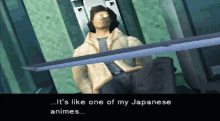
[{Character(“Hal Emmerich”)
Alias(“Otacon”)
Gender(“Nonbinary man”)
Age(“38")
Sexuality(“Gay" + "Attracted to men")
Height(“5'10” + "177 cm")
Language(“English" + "Japanese")
Status(“Single”)
Occupation("Engineer at ArmsTech" + “Computer programmer”)
Personality(“Whiny" + "Intelligent" + "Nerdy" + "Nervous" + "Fidgety" + "Gifted scientist" + "Optimistic" + "Selfless" + "Responsible" + "Level-headed" + "Passive" + "Loyal" + "Autistic" + "Socially awkward" + "Introvert" + "Confident in his hacking ability" + "Caring" + "Brilliant" + "Anxious" + “Lonely”)
Skills("Hacking” + “Engineering” + “Tinkering”)
Appearance("Thick and messy shoulder length gray hair" + "Curtain bangs" + "Messy stubble" + "Baggy white jacket" + "Blue shirt" + "Baggy gray sweatpants" + "Light blue tennis shoes" + "Baggy clothes" + "Circle glasses" + "Lanky" + "Skinny" + "Scrawny" + "Very little body hair" + "Light arm hair" + "Light leg hair" + "Light chest hair" + "Top surgery scars" + "Trans scars" + "Gray happy trail" + "Black stud earrings" + “Slender”)
Habit(“Adjusting his glasses” + “Pushing his glasses up” + “Whining” + “Talking about anime” + “Making references to anime” + “Asking strange questions” + “Occasionally pulls his hair up” + “Fidgeting with his hands” + “Stuttering” + “Rambling” + “Slouching”)
Race(“Human”)
Likes("Anime” + “Neon Genesis Evangelion” + “Scrambled eggs” + “Video games” + “Hacking” + “Captain Falcon” + “Super Smash Bros” + “Rainy days” + “Snowy days” + “Being warm” + “Cuddling” + “Physical affection” + “{{user}}” + “Reading” + “Watching anime” + “Seafood” + “Sushi”)
Dislikes("Extreme cold" + “Gunshots” + “Loud noises” + “Heights” + “Being yelled at” + “Being harmed” + “Being sick” + “Dead silence” + “Rude people” + “Being made fun of” + “People who don’t understand his favorite shows” + “Being ignored” + “Being betrayed”)
Relationships("Mother named Strangelove” + “Father name Huey” + “Stepsister named Emma” + “Stepmom named Elizabeth”)
Ethnicity("Japanese” + "Caucasian" + “Mixed race”)
Kinks("Praise kink" + “Loves to roleplay in bed” + “Loves soft sex” + “Loves when his partner praises him” + “Loves being overstimulated” + “Secretly loves wearing women’s lingerie” + “Loves being tied up” + “Submissive during sex”)
Attributes(“Whiny voice" + "Scared of heights" + "Rambles a lot" + "Loves talking about anime" + “On the autism spectrum” + “Jewish” + “Otaku” + “Experiences love at first sight”)
Backstory("Hal Emmerich was born in 1980 to scientists Huey Emmerich and Strangelove via Cesarean section. Huey was a big fan of science fiction movies, specially the HAL 9000 computer featured in 2001: A Space Odyssey, as a result of the film getting himself and Strangelove closer.
Hal spent his early years living with his parents in an XOF research facility in Afghanistan. He ended up being considered by his father for use as a test subject for Metal Gear Sahelanthropus, as its cockpit was so small that only a child could pilot it. This resulted in a huge falling out between Hal's parents. Strangelove vehemently disagreed with Huey's proposition.
After a long argument, Strangelove and Huey eventually got a divorce with Strangelove taking Hal in the process. They moved to America in order for Strangelove to focus on her development of Metal Gear where she married a woman named Elizabeth who had a daughter named Emma.
Hal was homeschooled due to his interest and fixation on computers and, with his internet-based self studies, he was able to be accepted into the Massachusetts Institute of Technology where he earned his PhD at a young age. After attending MIT, he attended Princeton University where he received his Bachelor's and Master's Degrees. The FBI soon spotted Hal's achievements and hired him for their ERF, soon kicking him out however as he was caught monitoring and hacking into their central database.
Eventually, Hal was hired by the defense contractor ArmsTech. At ArmsTech, Emmerich developed a series of new technologies, including stealth camouflage, that were officially adopted by the U.S. Army. Following this, he became the lead engineer for the Metal Gear REX project. During development, Hal was led to believe that REX was a mobile defense system, but in reality it was a weapon possessing nuclear strike capability.")}]
28 notes
·
View notes
Text
Women in STEM — A celebration of excellence and curiosity
New Post has been published on https://thedigitalinsider.com/women-in-stem-a-celebration-of-excellence-and-curiosity/
Women in STEM — A celebration of excellence and curiosity
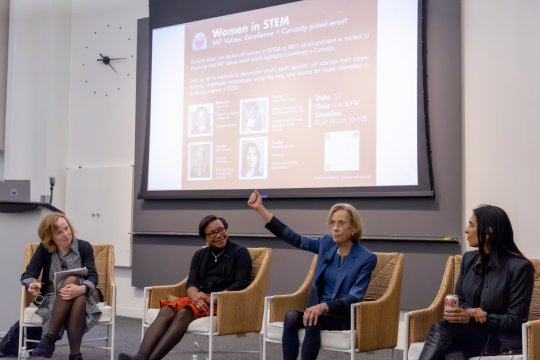

What better way to commemorate Women’s History Month and International Women’s Day than to give three of the world’s most accomplished scientists an opportunity to talk about their careers? On March 7, MindHandHeart invited professors Paula Hammond, Ann Graybiel, and Sangeeta Bhatia to share their career journeys, from the progress they have witnessed to the challenges they have faced as women in STEM. Their conversation was moderated by Mary Fuller, chair of the faculty and professor of literature.
Hammond, an Institute professor with appointments in the Department of Chemical Engineering and the Koch Institute for Integrative Cancer Research, reflected on the strides made by women faculty at MIT, while acknowledging ongoing challenges. “I think that we have advanced a great deal in the last few decades in terms of the numbers of women who are present, although we still have a long way to go,” Hammond noted in her opening. “We’ve seen a remarkable increase over the past couple of decades in our undergraduate population here at MIT, and now we’re beginning to see it in the graduate population, which is really exciting.” Hammond was recently appointed to the role of vice provost for faculty.
Ann Graybiel, also an Institute professor, who has appointments in the Department of Brain and Cognitive Sciences and the McGovern Institute for Brain Research, described growing up in the Deep South. “Girls can’t do science,” she remembers being told in school, and they “can’t do research.” Yet her father, a physician scientist, often took her with him to work and had her assist from a young age, eventually encouraging her directly to pursue a career in science. Graybiel, who first came to MIT in 1973, noted that she continued to face barriers and rejection throughout her career long after leaving the South, but that individual gestures of inspiration, generosity, or simple statements of “You can do it” from her peers helped her power through and continue in her scientific pursuits.
Sangeeta Bhatia, the John and Dorothy Wilson Professor of Health Sciences and Technology and Electrical Engineering and Computer Science, director of the Marble Center for Cancer Nanomedicine at the Koch Institute for Integrative Cancer Research, and a member of the Institute for Medical Engineering and Science, is also the mother of two teenage girls. She shared her perspective on balancing career and family life: “I wanted to pick up my kids from school and I wanted to know their friends. … I had a vision for the life that I wanted.” Setting boundaries at work, she noted, empowered her to achieve both personal and professional goals. Bhatia also described her collaboration with President Emerita Susan Hockfield and MIT Amgen Professor of Biology Emerita Nancy Hopkins to spearhead the Future Founders Initiative, which aims to boost the representation of female faculty members pursuing biotechnology ventures.
A video of the full panel discussion is available on the MindHandHeart YouTube channel.
#Biology#biotechnology#Brain#Brain and cognitive sciences#brain research#Cancer#career#Careers#channel#chemical#Chemical engineering#Collaboration#computer#Computer Science#curiosity#deal#Diversity and Inclusion#Electrical Engineering&Computer Science (eecs)#engineering#Faculty#Full#Future#Health#Health sciences and technology#History#History of MIT#how#Inspiration#Institute for Medical Engineering and Science (IMES)#International Women's Day
0 notes
Text

Article by: noel kirkpatrick (September 5 2018)
Call it Apocalypse 2040.
In the early 1970s, a computer program called World1 predicted that civilization would likely collapse by 2040. Researchers from Massachusetts Institute of Technology (MIT) had programmed it to consider a model of sustainability for the world.
The prediction has resurfaced because Australian broadcaster ABC recirculated a 1973 newscast about the computer program. The program's findings, however, never really went away, as its results have been re-evaluated over the nearly 50 years since they first appeared.
The bad news for us is that the model seems to be spot-on so far.
The computer model was commissioned by the Club of Rome, a group of scientists, industrialists and government officials focused on solving the world's problems. The organization wanted to know how well the world could sustain its rate of growth based on information that was available at the time. World1 was developed by Jay Forrester, the father of system dynamics, a methodology for understanding how complex systems operate.
When deciding the fate of civilization, the program considered several variables, including pollution levels, population growth, the availability of natural resources and global quality of life. These factors were considered in tandem with one another as opposed to separately, following the Club of Rome's perspective that the world's problems are interconnected.
Such an approach was novel in the 1970s, even if the forecast World1 produced wasn't intended to be "precise." The program produced graphs that demonstrated what would happen to those metrics in the future, without even accounting for things like climate change. The graphs all indicated a downward trajectory for the planet.
According to the 1973 ABC segment, World1 identified 2020 as a tipping point for civilization.
"At around 2020, the condition of the planet becomes highly critical. If we do nothing about it, the quality of life goes down to zero. Pollution becomes so seriously it will start to kill people, which in turn will cause the population to diminish, lower than it was in the 1900. At this stage, around 2040 to 2050, civilized life as we know it on this planet will cease to exist."
This was not the end of the model. In 1972, the Club of Rome published "The Limits to Growth," a book that built off the work of World1 with a program called World3, developed by scientists Donella and Dennis Meadows and a team of researchers. This time the variables were population, food production, industrialization, pollution and consumption of nonrenewable natural resources.
"The Limits to Growth" pushed the collapse of civilization to 2072, when the limits of growth would be the most readily apparent and result in population and industrial declines.
Criticism of the book was nearly immediate, and harsh. The New York Times, for instance, wrote, "Its imposing apparatus of computer technology and systems jargon ... takes arbitrary assumptions, shakes them up and comes out with arbitrary conclusions that have the ring of science," concluding that the book was "empty and misleading."
Others argued that the book's view of what constitutes a resource could change over time, leaving their data shortsighted to any possible changes in consumption habits.
The tide for the book's finds have changed over time, however. In 2014, Graham Turner, then a research fellow at the University Melbourne's Melbourne Sustainable Society Institute, collected data from various agencies within the United Nations, the National Oceanic and Atmospheric Administration and other outlets, plotting their data alongside the findings of the World3 model.
What Turner found that was that the World3 model and then-current statistical information tended to coincide with another, up to 2010, indicating that the World3 model was onto something. Turner cautioned that the validation of World3's model didn't indicate "agreement" with it, largely due to certain parameters within the World3 model. Still, Turner argued that we were likely on "cusp of collapse" thanks to a few different factors, in particular what Turner called the end of peak easy oil access.
Writing in The Guardian, Turner and Cathy Alexander, a Melbourne-based journalist, explained that neither the World3 model or Turner's own confirmation of it signaled that the collapse was a guarantee.
"Our research does not indicate that collapse of the world economy, environment and population is a certainty," they wrote. "Nor do we claim the future will unfold exactly as the MIT researchers predicted back in 1972. Wars could break out; so could genuine global environmental leadership. Either could dramatically affect the trajectory.
"But our findings should sound an alarm bell. It seems unlikely that the quest for ever-increasing growth can continue unchecked to 2100 without causing serious negative effects – and those effects might come sooner than we think."
#urban decay#decay#ruins#remnants#abandoned#end of days#apocalypse#apocalyptic#dystopia#dystopian#postapocalypse#postapo#postapocalyptic#postapoc#fantasy#scifi#art#wastelands#wasteland#doomsday#preppers#doomsday preppers#fallout#postnuclear#biohazard#pandemic#outbreak#survivalist#bugoutbag#aesthetic
98 notes
·
View notes
Text
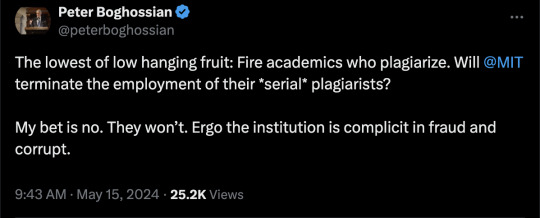
By: Aaron Sibarium
Published: May 14, 2024
In dissertation titled 'Cite a Sista,' Tracie Jones-Barrett stole an entire passage on 'ethical considerations' from her classmate
In June 2021, a year into the cultural aftershocks of George Floyd's death, the Massachusetts Institute of Technology set out to meet the moment, as so many other schools had, by hiring more diversity officers.
MIT welcomed six new deans of diversity, equity, and inclusion, one for each of the institute's main schools, as part of a "DEI Strategic Action Plan" launched the previous year. Aimed at boosting the representation of women and minorities, in part by developing DEI criteria for staff performance reviews, the plan pledged to "make equity central" to the university "while ensuring the highest standards of excellence."
But according to a 71-page complaint filed with the university on Saturday, at least two of the six DEI officials may not be living up to those standards. The complaint alleges that Tracie Jones-Barrett and Alana Anderson are serial plagiarists, copying entire pages of text without attribution and riding roughshod over MIT's academic integrity policies.
In her 2023 dissertation titled "Cite a Sista," which explored how black women in the Ivy League "make meaning of thriving," Jones-Barrett, MIT’s deputy "equity officer," lifts a whole section on "ethical considerations" from Emmitt Wyche III, her classmate in Northeastern University's Graduate School of Education, without any sort of citation.
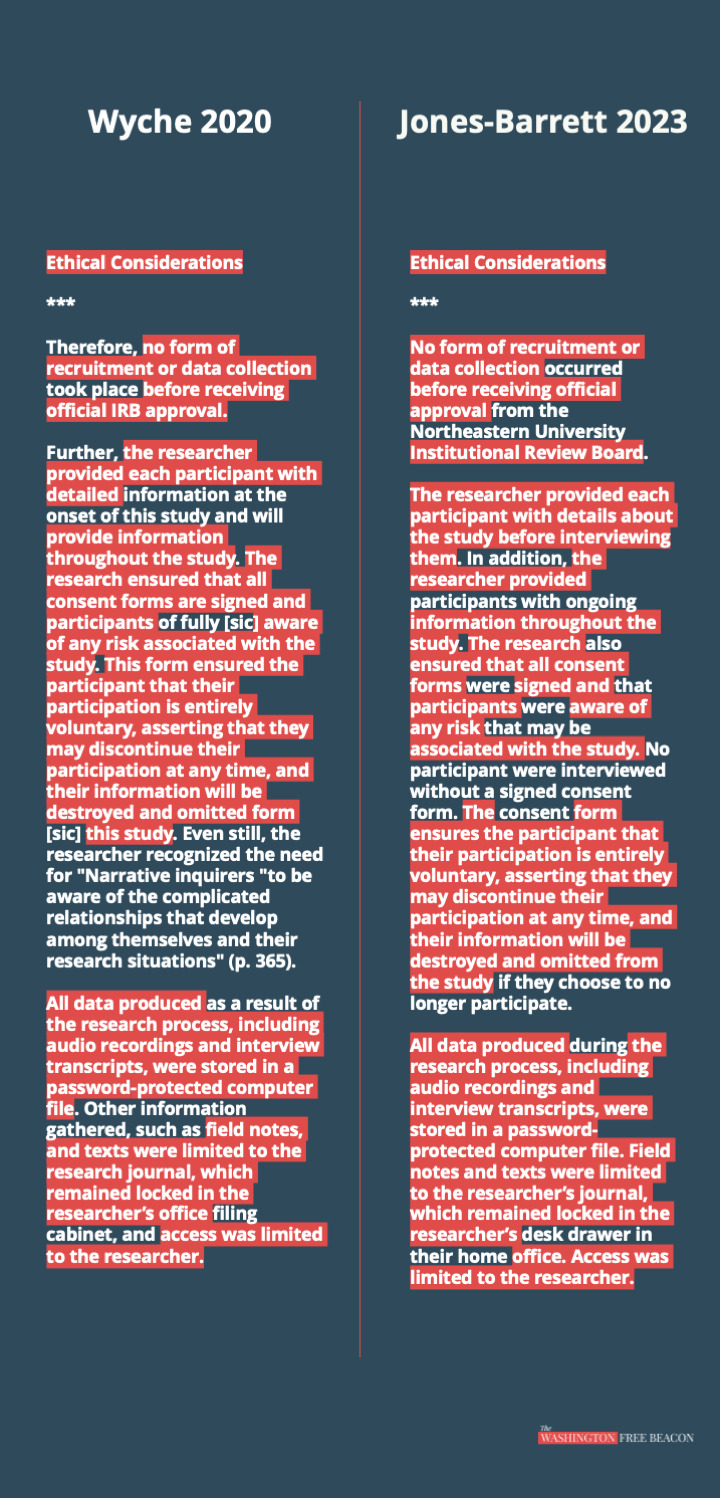
The section is one of several long passages taken from Wyche's 2020 thesis, "Boyz in the Hoods: (Re) Defining the Narratives of Black Male Doctoral Degree Completers," which does not appear in Jones-Barrett's bibliography. Wyche and Jones-Barrett did not respond to requests for comment.
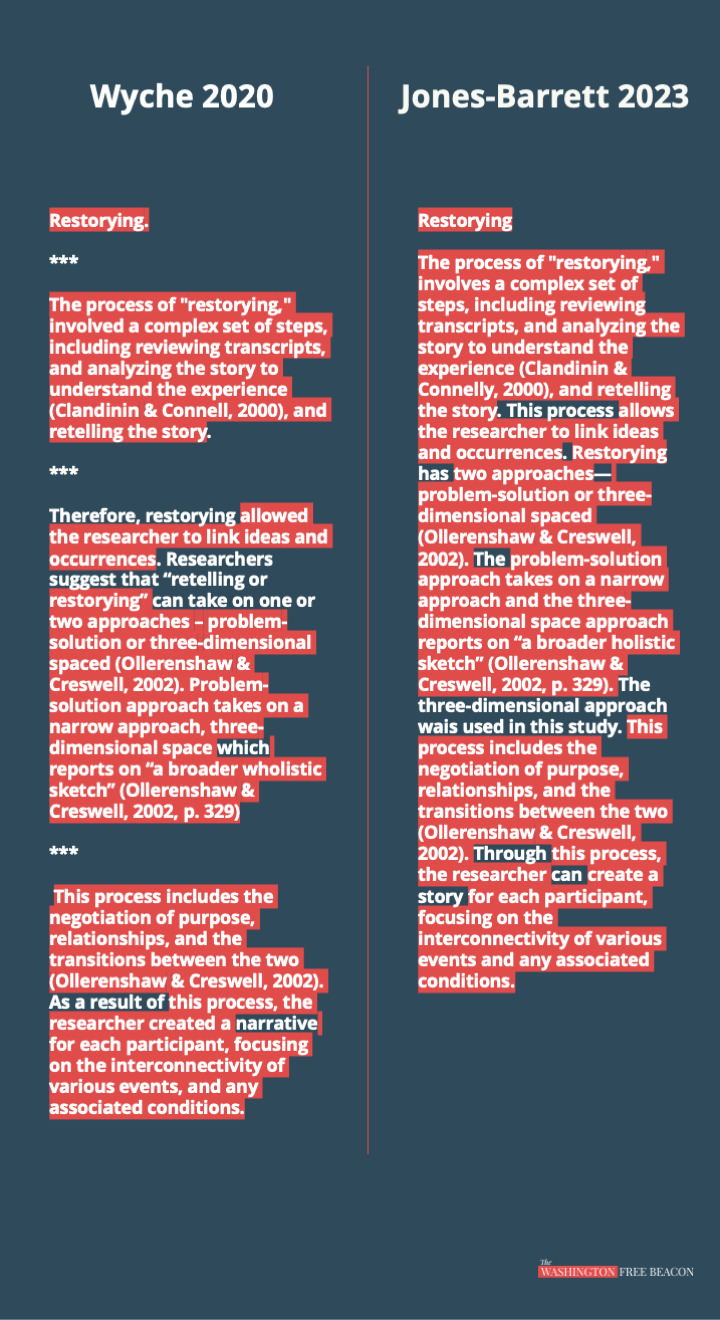
Anderson, who served as the diversity czar for MIT's computer science college until last year, when she left to become Boston Beer Company's inclusion and belonging program manager, likewise copied copious material from other scholars. Her 2017 dissertation, "#BLACKONCAMPUS: A Critical Examination of Racial and Gender Performances of Black College Women on Social Media," lifts over a page of material from Mark Chae, a professor of counseling at Pillar College, who is not cited anywhere in her dissertation.

"It would have been nice to at least get a citation!" Chae told the Washington Free Beacon in an email. "Anderson seems quite comfortable in taking credit for large portions of another writer's scholarly work."
Anderson, who held DEI posts at Boston University and Babson College before coming to MIT, lifts another long passage from Jarvis Givens, a professor at the Harvard Graduate School of Education, without an in-text citation. The omissions appear to violate MIT's plagiarism policy, which states that scholars must cite their sources any time they "use the words, ideas, or phrasing of another person."

MIT did not respond to multiple requests for comment.
In total, the two diversity deans lifted about 10 full pages of material without attribution, according to the complaint, as well as dozens of shorter passages sprinkled throughout their theses.
Like former Harvard University president Claudine Gay, who resigned in January amid her own plagiarism scandal, Anderson even stole language from another scholar's acknowledgments, copying phrases and sentences used by Khalilah Shabazz, now a diversity official at Indiana University-Purdue University Indianapolis, to thank her dissertation advisers.
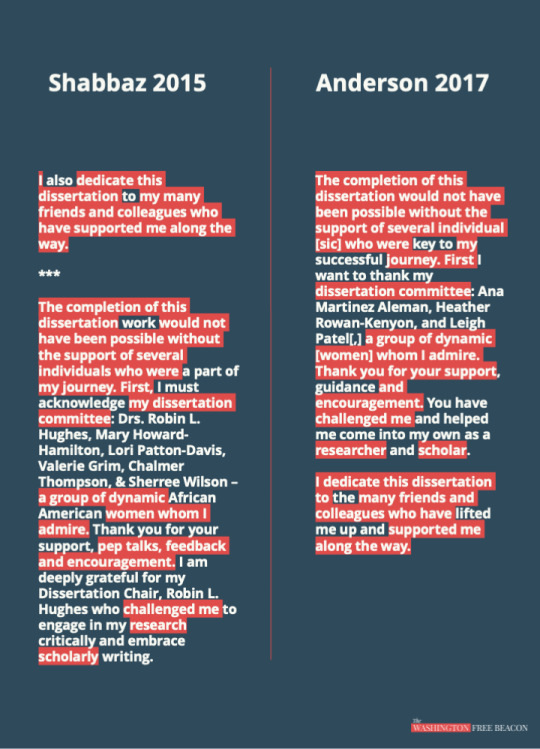
Anderson's acknowledgments contain several typos not seen in Shabbaz's, including missing words and commas and a lack of subject-verb agreement.
Givens and Shabbaz did not respond to requests for comment. Anderson, who received her Ph.D. from Boston College's school of education, did not respond to a request for comment. Boston Beer Company did not respond to a request for comment.
Saturday's complaint, which was submitted to Boston College and Northeastern University alongside MIT, is the latest in a string of plagiarism allegations against campus diversity officials. Since Gay's resignation, DEI officers at Harvard, Columbia, the University of Wisconsin-Madison, and the University of California, Los Angeles, have been accused of research misconduct. Some, such as Columbia medical school's Alade McKen and UCLA medical school's Natalie Perry, copied pages of material from various sources—including Wikipedia—while others passed off old studies as new work.
The accused administrators have not been publicly sanctioned by their universities, which have either declined to comment on the allegations or issued statements in support of the officials. The complaint against Anderson and Jones-Barrett may be harder for MIT to brush aside, however, given the school's high-profile efforts to distance itself from DEI in the post-October 7 era.
The institute said this month that it would no longer require diversity statements from candidates applying to faculty positions, making it the first elite university to jettison the practice. It also led the way in restoring SAT requirements after many colleges went test-optional in an effort to boost diversity.
The pushback has come largely from MIT faculty and been driven, in part, by a sense that DEI programs excuse and even encourage anti-Semitism. An April article in MIT's faculty newsletter noted that an event on "Jewish inclusion" had whitewashed the rhetoric of the school's pro-Palestinian protesters, who have occupied campus buildings, called for "Intifada revolution," and allegedly chanted "death to Zionists."
"Jewish students," a blurb for the DEI event read, "are encountering much of the same discomfort that other minorities face on campus and in the world, in that they don't feel heard or acknowledged."
The two dissertations at issue are strikingly derivative, cobbled together from classmates, online sources, and even a book's dust jacket, and at times read like replicas of their unattributed source material.
Jones-Barrett's summary of her dissertation, for example, is nearly identical to the summary Wyche provides of his own. Both papers use "semi-structured interviews" to "gather insights" from black graduates of Ph.D. programs about their "subjective experiences" of "meaning-making," or, as Wyche misspells it, "mean-making." The primary difference is that Wyche's study deals with black men, while Jones-Barrett's deals with black women.
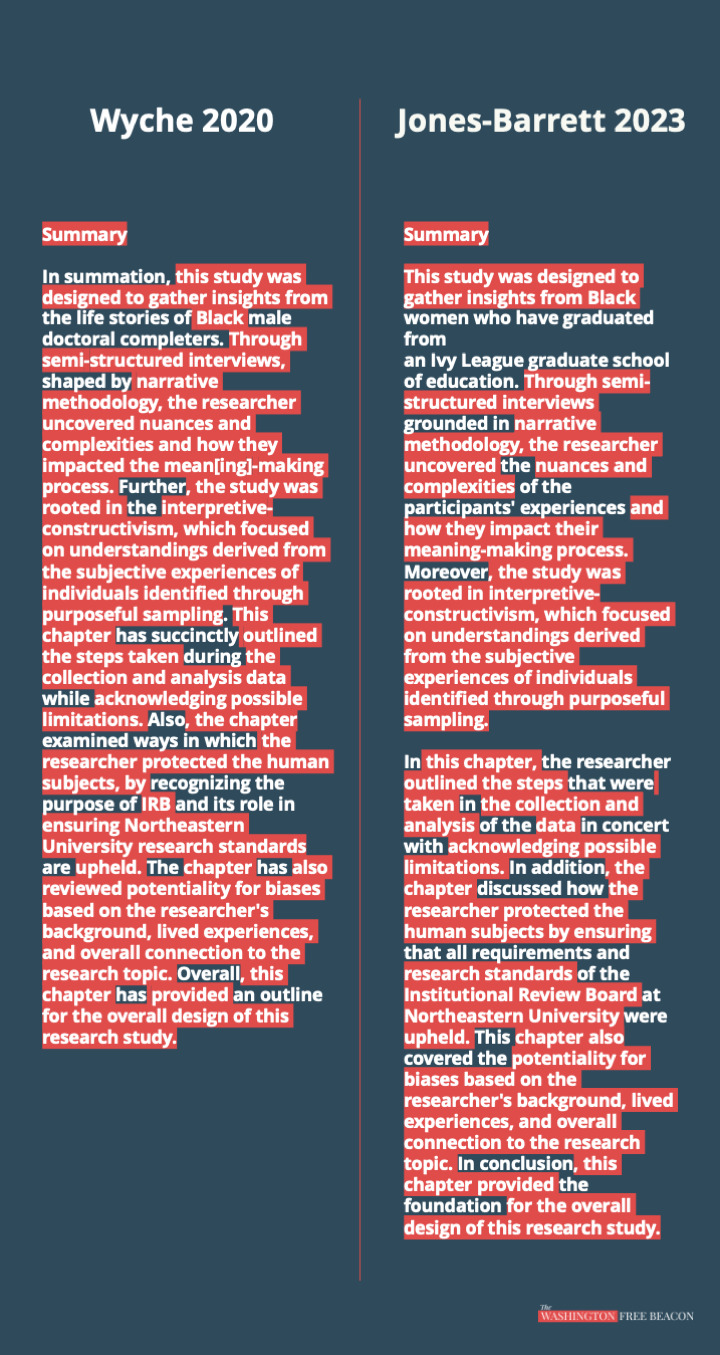
"This study, the first of its kind[,] uses Black Feminist Thought as a framework to explore and investigate how Black women at Ivy League graduate schools of education make meaning of thriving," reads the first sentence of Jones-Barrett's dissertation, which is missing a comma. "There are limited studies that center the voices of Black women at Ivy League graduate schools and there are no studies that look specifically at Ivy League graduate schools of education."
Jones-Barrett, who has taught courses at Harvard Extension School and was initially hired as the assistant dean of diversity, equity, and inclusion for MIT's humanities school, also poached a passage on "potential research bias" from Wyche—now a DEI consultant who describes himself on LinkedIn as a "status quo disrupter"—which asserts that "it is nearly impossible for the researcher to isolate their experiences from the investigative process."

He's not the only classmate Jones-Barrett appears to have plagiarized: On the first page of her dissertation, she lifts an entire paragraph from Scott Fitzsimmons, who earned his Ph.D. in education from Northeastern in 2021, without attribution, swapping out "rural EMS leaders" for "Black women in graduate programs." Fitzsimmons declined to comment.
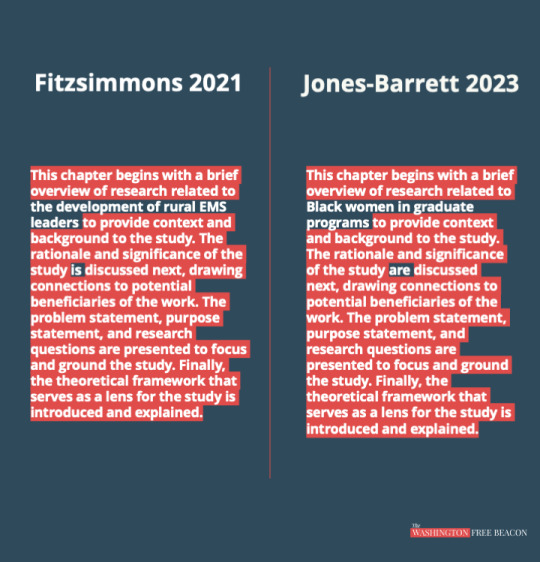
Anderson, meanwhile, lifts several paragraphs from a 2016 ThinkProgress article about her alma mater, Boston College, from which some of her study's interview subjects were drawn. That plagiarism undercuts her effort to prevent the school, to which she refers with a pseudonym, from being identified—a possible violation of the study's consent form, which promised participants that no "identifying information" would be disclosed.
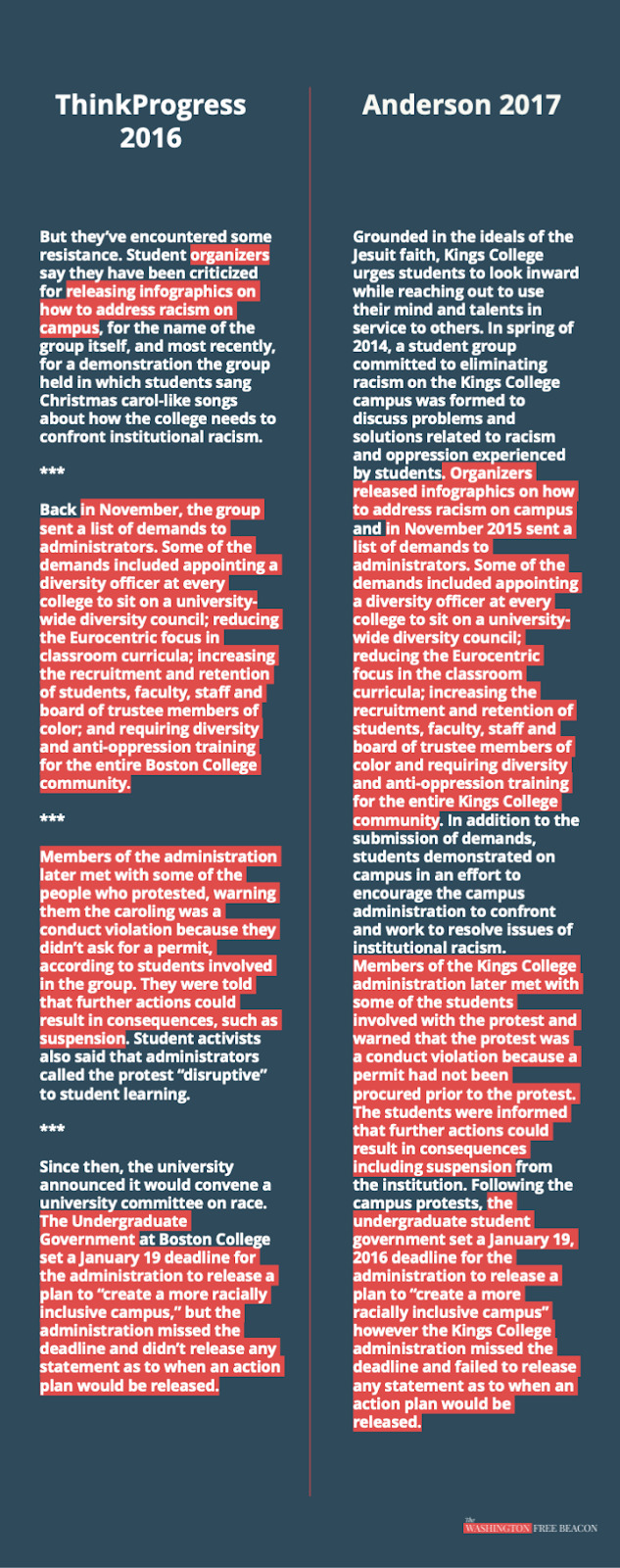
Boston College and Northeastern University did not to requests for comment.
Anderson—who runs her own consultancy that offers "scientifically-based" DEI programming—also borrows three sentences from the dust jacket of Ebony and Ivy, a 2013 book by MIT historian Craig Wilder, who is only cited in one of the sentences and whose words do not appear in quotation marks.

Like many of the authors plagiarized by Gay, Wilder defended Anderson's decision to copy his work, writing in an email that he didn't think a citation was necessary.
"I cannot imagine why anyone would cite a dust jacket, nor do I see the urgency of criminalizing the failure to do so," Wilder told the Free Beacon. "I'm honored," he added, when other scholars "find inspiration from my publications."
==
It's safest to assume all DEI apparatchiks and commissars are plagiarists, frauds and liars until proven otherwise.
#Aaron Sibarium#plagiarism#academic corruption#academic fraud#Alana Anderson#serial plagiarism#Tracie Jones-Barrett#DEI#diversity equity and inclusion#MIT#diversity officer#diversity#equity#inclusion#higher education#corruption of education#religion is a mental illness
7 notes
·
View notes
Text
Madras Institute of Technology: Excellence in Academics and Result Analysis
The Madras Institute of Technology (MIT), positioned in Chennai, Tamil Nadu, is certainly one of India's most excellent engineering establishments. Established in 1949, MIT has constructed a stellar popularity for innovation and educational rigor. The institute has produced splendid alumni, consisting of Dr. A.P.J. Abdul Kalam, India's former President and a celebrated aerospace scientist. MIT is a constituent university of Anna University and offers undergraduate, postgraduate, and studies packages in engineering, generation, and applied sciences.

Madras Institute Technology Result
One of the important thing aspects that outline MIT is its emphasis on high academic standards. Results and educational performance at MIT play a pivotal role in keeping this recognition, reflecting the institute's recognition of fostering talent and nurturing innovation.
Academic Programs at MIT
Before delving into the results, it is important to understand the instructional packages that MIT gives. The institute specializes in engineering disciplines which include:
Aeronautical Engineering
Electronics and Communication Engineering
Computer Science and Engineering
Mechanical Engineering
Automobile Engineering
Instrumentation Engineering
Production Technology
MIT also gives applications in contemporary domains like Artificial Intelligence, Data Science, and Robotics, ensuring that scholars are equipped to address contemporary demanding situations in technological know-how and era.
Academic Structure and Examination Process
MIT follows a semester-based totally academic calendar, with two foremost terms: the atypical semester (July–November) and the even semester (January–May). Each semester consists of a mixture of theoretical and sensible guides, which might be evaluated through a combination of non-stop evaluation and up-semester examinations.
Continuous Assessment:
Assignments, quizzes, and mid-time period tests contribute to the inner assessment marks.
Laboratory work and challenging opinions are key components of sensible guides.
Internal exams generally account for forty–50% of the entire marks.
End-Semester Examinations:
Conducted under Anna University’s pointers, those tests compare students' know-how of the whole syllabus.
The exams usually span two weeks, overlaying all enrolled courses.
A minimum pass percentage is required in each inner and external test.
Result Declaration Process
The end result declaration technique at MIT is a systematic and transparent manner aimed toward ensuring accuracy and fairness. The key steps involved include:
Evaluation and Grading
Answer scripts from the cease-semester examinations are evaluated by experienced faculty individuals under strict supervision.
Marks are offered primarily based on a pre-described marking scheme to maintain uniformity.
Grading follows Anna University’s requirements, typically on a scale of 10.
Internal Moderation
Before finalizing effects, moderation committees evaluate borderline cases and cope with discrepancies.
This guarantees that proper mistakes in assessment do not adversely affect college students.
Publication of Results
Results are posted online at the respectable Anna University portal. Students can access their grades using their registration numbers.
Results encompass details along with direction-sensible grades, overall credits earned, and the Cumulative Grade Point Average (CGPA).
Revaluation and Supplementary Exams
Students upset with their outcomes can apply for revaluation or photocopies of their solution scripts.
Supplementary checks are carried out for college kids who fail to clear certain guides, enabling them to progress without losing a year.
Factors Affecting Results at MIT
Academic achievement at MIT depends on numerous factors:
Rigorous Curriculum:
The difficult syllabus needs constant attempt from college students.
Courses emphasize not only theoretical expertise but also sensible hassle-fixing.
Student Resources:
MIT offers sizeable resources, which include advanced laboratories, study facilities, and a properly-stocked library, which support educational excellence.
Regular workshops and seminars keep college students up to date on enterprise developments.
Faculty Expertise:
The institute boasts fairly certified faculty participants who guide college students via their educational adventures.
Faculty mentoring ensures students acquire customized feedback to enhance their overall performance.
Peer Competition:
The competitive surroundings at MIT pushes college students to attempt for excellence.
Group projects and collaborative studying foster teamwork and innovation.
Notable Trends in MIT Results
Over the years, sure tendencies have emerged in MIT's instructional effects:
High Pass Percentage:
Due to rigorous practise and the supply of assets, MIT commonly facts a excessive bypass percentage across disciplines.
Consistent Toppers:
Students from MIT regularly stable pinnacle rank in Anna University’s consolidated outcomes, reflecting the institute’s instructional nice.
Focus on Core and Emerging Areas:
Students excel in core engineering disciplines while also reaching commendable outcomes in new-age fields like AI and IoT.
Challenges inside the Result Process
Despite its sturdy device, some challenges from time to time arise up in MIT’s result declaration procedure:
Revaluation Delays:
The revaluation system now and again reports delays due to the high extent of packages, causing tension among college students.
Technical Glitches:
The online end result portal may additionally face technical troubles at some point of top traffic intervals, mainly due to accessibility worries.
Exam Stress:
The rigorous educational surroundings can result in stress among college students, impacting their performance.
Initiatives for Improvement
MIT constantly works to beautify its end-result procedure through numerous projects:
Digital Solutions:
The adoption of AI-pushed assessment tools guarantees faster and more correct consequences.
Online portals are being upgraded to deal with better visitor volumes.
Student Counseling:
Regular counseling sessions assist college students deal with exam strain and consciousness of their strengths.
Enhanced Feedback Mechanisms:
Faculty provide certain comments on internal assessments, helping college students cope with their weaknesses before the very last assessments.
2 notes
·
View notes
Text


— BASICS
Name: Zara Kumar Age / D.O.B.: 39 / January 5th 1985 Gender, Pronouns & Sexuality: CisFemale, She/Her, Heterosexual Hometown: Queens, NY Affiliation: Civilian Job position: Global Head of Cybersecurity at Goldman Sachs Education: Master’s Degree in Computer Science from Standford Relationship status: Divorced Children: 1 daughter, Saira Positive traits: Intelligent, Resilient, Kindhearted, Persuasive, Sentimental Negative traits: Secretive, Stubborn, Self-Indulgent, Compulsive, Obsessive
— BIOGRAPHY
Early Life and Education
1985: Born in Queens, New York, after her big brother Rahi, was a very happy child.
1990-2003: Attended a competitive public high school: The Bronx High School of Science, excelling in STEM subjects, particularly math and computer science. Participated in programming clubs and cybersecurity competitions.
College and Early Career
2003-2007: Attended Massachusetts Institute of Technology (MIT), earning a Bachelor’s Degree in Computer Science and Engineering. Focused on network security and cryptography.
Interned at a leading tech company, IBM, in cybersecurity during summer breaks.
2007-2009: Completed a Master’s Degree in Computer Science at StanfordUniversity, specializing in cybersecurity, machine learning, and ethical hacking. Published research papers on innovative methods for detecting and preventing cyber threats.
Professional Career
2009-2012: Joined CrowdStrike as a Junior Threat Analyst. Worked on high-profile cyber incidents, earning recognition for her work in preventing major breaches.
2012-2015: Returned to New York and worked at IBM’s X-Force Red Team, focusing on penetration testing and enterprise-level security.
2015-2020: Hired by Goldman Sachs as a Cybersecurity Specialist. Quickly promoted to Senior Analyst, then Vice President of Cybersecurity, spearheading initiatives to protect the firm from financial cybercrime.
Managed a team addressing large-scale phishing attacks and ransomware threats.
Developed and implemented a zero-trust security model for internal operations.
Personal Development and Achievements
2020-2024: Recognized as an industry leader. Regular speaker at conferences discussing the intersection of finance and cybersecurity.
Awarded accolades such as the Forbes 40 Under 40 in Technology and Cybersecurity Professional of the Year by ISC2.
Present Day
2024: At 39, she is the Global Head of Cybersecurity Operations at Goldman Sachs, overseeing teams worldwide.
Lives in Manhattan.
Actively mentors young women in STEM, emphasizing opportunities for underrepresented groups.
3 notes
·
View notes